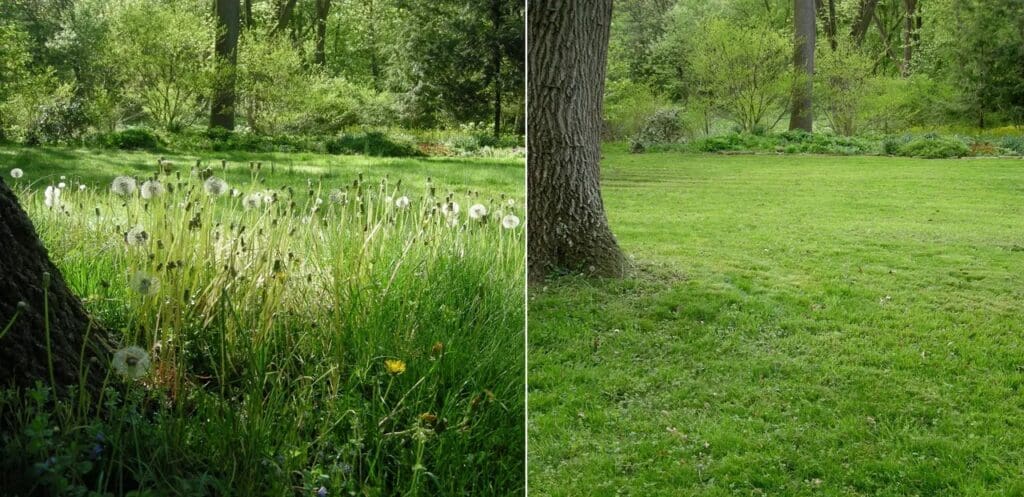
Introducing Polyculture Lawns
A Polyculture lawn is most simply a lawn of mixed species of mowable plants. This is in contrast to conventional weed-free flower-less lawns which have a single grass species such as Bermuda or St Augustine grass. Monoculture lawns are wastelands for pollinators and typically require many resources to maintain (excess water, fertilizers, and herbicides). Polyculture lawns are a return to the original lawns which included many grassy herbs such as thyme, chamomile, clovers and fescues. The multiple species in Polyculture lawns bring different characteristics to the lawn environment such as nitrogen fixation (legumes), pest resistance (scented plants), and pollinator habitat (yarrow and dandelion).
Grasslands, including polyculture lawns, store most of their carbon in plant roots and soil and are therefore more resilient than forests in our fire-prone areas. The diversity of species leads to greater soil health with more carbon, which in turn means greater drought resilience as the carbon-rich soil can hold more water.
We are currently in a climate crisis in which reducing carbon emissions is not sufficient to address our rapidly warming planet. Residential yards are a largely untapped opportunity to draw down carbon. The city of San Diego covers approximately 372 square miles or 238,000 acres of which about 24%, or 57,000 acres, is residential. According to the Times of San Diego (07/26/2021), the median lot size in San Diego is 6,500 sq ft and the median home size is 1,500 sq ft. If we assume that the 1,500 sq ft homes on 6,500 sq ft lots have on average 1,000 sq ft of hard scape (driveways, patios, and walkways) — that leaves about 4,000 sq ft of potential landscaped area for the single family homes. Given that approximately 80% of San Diego residential land is currently zoned for single family, we can make a rough guess that the available residential yard area is at minimum 20,000 acres. We will be exploring how many metric tons of carbon can be sequestered per year for different percentages of rewilded lawns!
There are a number of ways to bring native plants, trees, and biodiversity to residential landscapes — all of which will result in improved carbon sequestration and other ecosystem services. Polyculture lawns offer a special opportunity because they are accessible and inexpensive and allow working with existing turf rather than the expense and labor of removing and replanting that turf.

Most simply, the installation of a polyculture lawn requires two basic steps: preparing the existing lawn by mowing it short and dethatching/aerating the soil, and over seeding the existing lawn with a diverse mix of native seeds combined with compost — as shown in the featured image above. Hand-watering or irrigation is needed until germination occurs and following that, watering will become increasingly infrequent. Ideally, the landscape is re-graded as needed to capture rainwater runoff for greater drought resilience.
Finally, a polyculture lawn can bring beauty and magic to a backyard habitat in a way that Bermuda grass cannot. There is the opportunity to see butterflies and hummingbirds, smell wonderful flower scents, and taste sour grass. Backyards are often the first and only opportunity for some folks to experience nature, and the practice of overseeding existing turf with a variety of native seeds is inexpensive and straight-forward and therefore accessible to everyone.

Tags:
